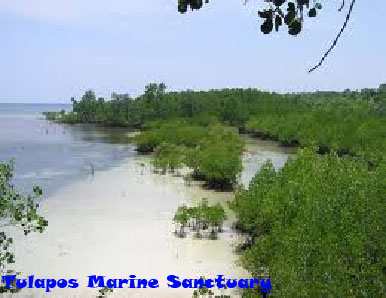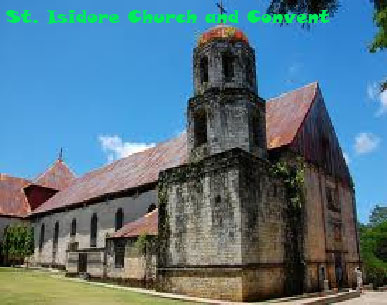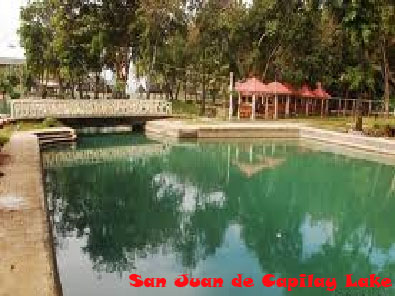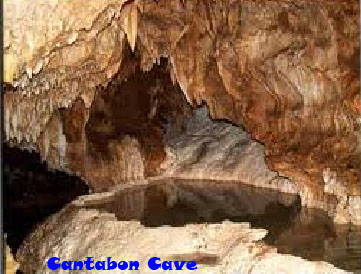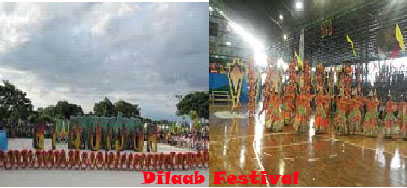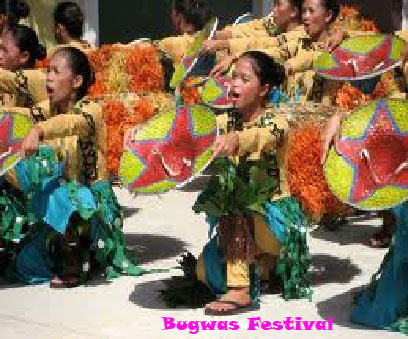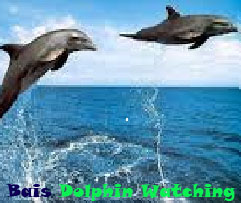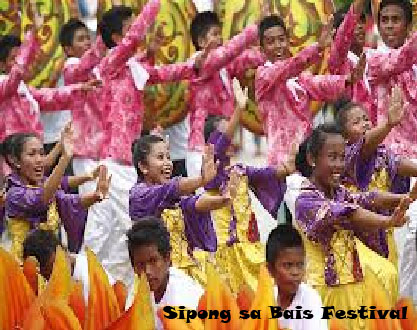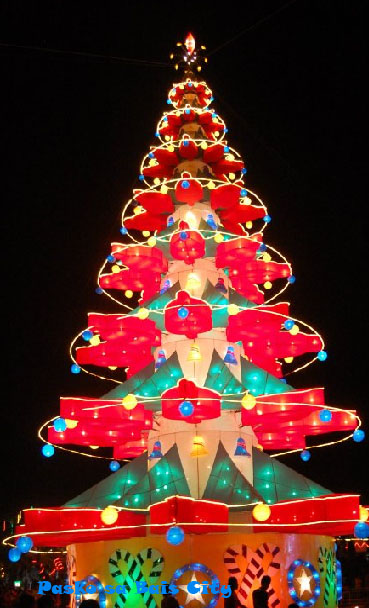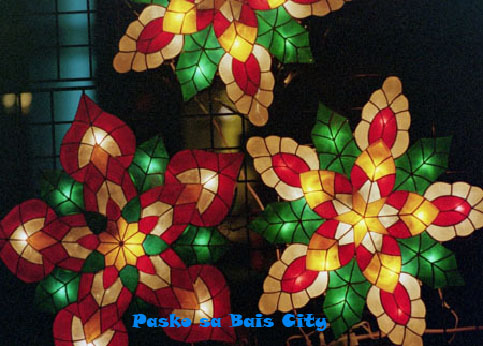Sta. Catalina
Natural Attractions

Talostos Falls
With a distance of 50 feet from the ground, Talostos Falls of Barangay Amio is acclaimed to be the tallest crystal clear waterfall among the numerous gushing waters in the land of Sta. Catalina. This cataract rests four kilometers from Poblacion Amio and can be accessed by a motorcycle. There are certain areas though taht trekking is advised.
Mantangla Falls
Because if its towering stature, one ahs to look up to visually register the spectacular landscape of the site. Thus, it bears the name "MANTANGLA"(from the root word tangla which means to look up). Travel is made easy by mora than a half hour car/motor ride from its fathertown and less than an hour walk going to the falls.

Mantabios Falls
A 3-layered cascade sorrounded by dense forest trees located in Barangay, Sto. Rosario..undisturbed, soothingly cold, incessantly flowing water of Mantabios. The most easy to reach waterfall having a distance of 500 meters from the Provincial road of Barangay Kabulacan.
Bug-as Falls
It resembles as that of Bancit Falls ahving abundant flow of clear waters smoothly gliding on teh firmly postured shapely rocks. Best ton be visited during the months of April and May since the road is hardly accessed when rainy season comes. This attraction can be found in Sitio Jagna, Barangay Nagbalaye, Sta. Catalina, Negros Oriental.
Baknit Falls
Recently discovered internationally competitive natural attraction of San Francisco, Sta. Catalina that proudly introduces its 7 layers of waterfalls graciously flowing on huge well-formed rocks. This destination is recommended to adventure-enthusiasts as they need to climb mountains, to ride on horses, to walk for hours to reach this naive beauty of nature.
Mantangla Spring
This pure, safe and fresh water quences the thirst and needs not only of the residents but also of the travelers. Resting just beside a waterfall, courageous tourists climb their way up to the rocks to visibly see the depth of the temperature waters.
Carnabalan Spring, Cave and Falls
Santahanons have called it a "3-in-1" attraction. With the cave and spring on top and am water fall under it, a perfect sight is established in the inner part of Barangay Buenavista.
Pamu-at Cave
Nestled at the heart of Barangay Obat, Sta. Catalina, this unique conical formation of calcerous matter has developed after centuries of nurture and patient safeguarding.
Maglangit Cave
After hours of journey from its mother barangay, San Francisco, nature lovers are astounded by the welcoming trunk-like stalactites and mounting stalagmites. The fiddly anf gloomy path to the exit adds thrill to the one of a kind experience.
Wildlife Sanctuary
Preservation of rare and extinct species had long been the drive of Sta. Catalina. The reason why this 2-hectare tract of land that are covered with thick perennial plants was declared as Wildlife Sanctuary. Serving as haven to almost a hundred of monkeys and to countless flore and fauna, this site is continually protected by the "Bantay Lasang" and by the residents of Inobongan, kabulakan.
Caranoche Mangrove
If you want to see nature at its greenest color, pay a visit for a day in Caranoche and take pleasure in the thick lane of mangrove plantation with its vast earthly colored waters connecting to the Sicopong River. It only takes a 20 minute ride from the town to reach this refreshing site.
Caranoche Beach
Every summer and some time in June, the lenghty azure blue sea of Caranoche is flooded by domestic and foreign vacationers. The warm water summons relaxation and the shade of the four existing ordinary native cottages offers comfort to tourists and bystanders. Activities like beach volley, bangka riding contest, fishing and Skim boarding are common to the place.
Historical and Cultural Attractions
St. Catherine of Alexandria Parish Church
Built in 1958 and rahabilitated in 1962 by Rev. Fr. Geminiano Semprun, the St. Catherine of Alexandria Parish Church has served as the eternal witness to the unrelenting Christian evangelization of Sta. Catalina for the past 53 years and the beacon of the catholic Faith. This half-century old church is currently undergoing expansion to accomodate an ever increasing number of churchgoers. Come, attend a mass and be one with the Santahanons in their devotion to their Patron Saint.
Heavenly Garden
Located within the Rama Estate in Sitio Balanga, Barangay Milagrosa, Our Lady of Lourdes Shrine has 14 stations of the Cross, a diorama depicting highlights of the last few hours of the Life of Jesus leading to his crucifixion. All stations have life-size statues and towered literally by a gigantic statue of Our Lady of Lourdes. Situated in a hilly terrain, devotion to our Lady of Lourdes is all the more compelling. Join us complete the Way of the Cross especially during Lent and feel yourself cleansed as you regain yourn spiritually.
Pakol Festival
Santa Catalina is Negros Oriental's top exporter of bananas. Its dwindling forest is home to pygmy monkeys, the only habitat left in the province. To accentuate the importance of these concerns, Pakol Festival was born. A multiple winner of the Buglasan Festival of Festivals Contest, Pakol Festival recognizes the contribution of bananas to the livelihood of Santahanons as well as to the economy of the Municipality and the endangered status of the only endemic simian specie in Negros Oriental.
Pakol is a kind of banana, the fruit of which is full of seeds and is the main staple of the monkeys. Usually found in the hinterlands of Sta. Catalina, this fruit epitomizes the fusion of the role bananas play in the local economy and the role the monkeys represent in the fragility of the balance of nature.
A third placer in the 2008 Sinulog Festival, Pakol Festival has become the tourism promotion flagship ofSanta Catalina. Listen to the drums as they beckon you to come to Santa Catalina anf gyrate to the beat.
Getting There DUMAGUETE Manila - Dumaguete By Air: Philippine Airlines, Cebu Pacific By Sea: Super Ferry, Negros Navigation Cebu - Dumaguete By Fastferry: Ocean Jet, Weesam Express By Ship: Cokaliong Shipping, George & Peter Lines Larena - Dumaguete By Fastferry: Delta-Fast Ferry By Ship: Palacio Shipping Lines Siquijor - Dumaguete By Motorized Boat STA. CATALINA Dumaguete - sta. Catalina By Land: Ceres liner, Land Master*V-Hire
Natural Attractions

Talostos Falls
With a distance of 50 feet from the ground, Talostos Falls of Barangay Amio is acclaimed to be the tallest crystal clear waterfall among the numerous gushing waters in the land of Sta. Catalina. This cataract rests four kilometers from Poblacion Amio and can be accessed by a motorcycle. There are certain areas though taht trekking is advised.
Mantangla Falls
Because if its towering stature, one ahs to look up to visually register the spectacular landscape of the site. Thus, it bears the name "MANTANGLA"(from the root word tangla which means to look up). Travel is made easy by mora than a half hour car/motor ride from its fathertown and less than an hour walk going to the falls.

Mantabios Falls
A 3-layered cascade sorrounded by dense forest trees located in Barangay, Sto. Rosario..undisturbed, soothingly cold, incessantly flowing water of Mantabios. The most easy to reach waterfall having a distance of 500 meters from the Provincial road of Barangay Kabulacan.
Bug-as Falls
It resembles as that of Bancit Falls ahving abundant flow of clear waters smoothly gliding on teh firmly postured shapely rocks. Best ton be visited during the months of April and May since the road is hardly accessed when rainy season comes. This attraction can be found in Sitio Jagna, Barangay Nagbalaye, Sta. Catalina, Negros Oriental.
Baknit Falls
Recently discovered internationally competitive natural attraction of San Francisco, Sta. Catalina that proudly introduces its 7 layers of waterfalls graciously flowing on huge well-formed rocks. This destination is recommended to adventure-enthusiasts as they need to climb mountains, to ride on horses, to walk for hours to reach this naive beauty of nature.
Mantangla Spring
This pure, safe and fresh water quences the thirst and needs not only of the residents but also of the travelers. Resting just beside a waterfall, courageous tourists climb their way up to the rocks to visibly see the depth of the temperature waters.
Carnabalan Spring, Cave and Falls
Santahanons have called it a "3-in-1" attraction. With the cave and spring on top and am water fall under it, a perfect sight is established in the inner part of Barangay Buenavista.
Pamu-at Cave
Nestled at the heart of Barangay Obat, Sta. Catalina, this unique conical formation of calcerous matter has developed after centuries of nurture and patient safeguarding.
Maglangit Cave
After hours of journey from its mother barangay, San Francisco, nature lovers are astounded by the welcoming trunk-like stalactites and mounting stalagmites. The fiddly anf gloomy path to the exit adds thrill to the one of a kind experience.
Wildlife Sanctuary
Preservation of rare and extinct species had long been the drive of Sta. Catalina. The reason why this 2-hectare tract of land that are covered with thick perennial plants was declared as Wildlife Sanctuary. Serving as haven to almost a hundred of monkeys and to countless flore and fauna, this site is continually protected by the "Bantay Lasang" and by the residents of Inobongan, kabulakan.
Caranoche Mangrove
If you want to see nature at its greenest color, pay a visit for a day in Caranoche and take pleasure in the thick lane of mangrove plantation with its vast earthly colored waters connecting to the Sicopong River. It only takes a 20 minute ride from the town to reach this refreshing site.
Caranoche Beach
Every summer and some time in June, the lenghty azure blue sea of Caranoche is flooded by domestic and foreign vacationers. The warm water summons relaxation and the shade of the four existing ordinary native cottages offers comfort to tourists and bystanders. Activities like beach volley, bangka riding contest, fishing and Skim boarding are common to the place.
Historical and Cultural Attractions
St. Catherine of Alexandria Parish Church
Built in 1958 and rahabilitated in 1962 by Rev. Fr. Geminiano Semprun, the St. Catherine of Alexandria Parish Church has served as the eternal witness to the unrelenting Christian evangelization of Sta. Catalina for the past 53 years and the beacon of the catholic Faith. This half-century old church is currently undergoing expansion to accomodate an ever increasing number of churchgoers. Come, attend a mass and be one with the Santahanons in their devotion to their Patron Saint.
Heavenly Garden
Located within the Rama Estate in Sitio Balanga, Barangay Milagrosa, Our Lady of Lourdes Shrine has 14 stations of the Cross, a diorama depicting highlights of the last few hours of the Life of Jesus leading to his crucifixion. All stations have life-size statues and towered literally by a gigantic statue of Our Lady of Lourdes. Situated in a hilly terrain, devotion to our Lady of Lourdes is all the more compelling. Join us complete the Way of the Cross especially during Lent and feel yourself cleansed as you regain yourn spiritually.
Pakol Festival
Santa Catalina is Negros Oriental's top exporter of bananas. Its dwindling forest is home to pygmy monkeys, the only habitat left in the province. To accentuate the importance of these concerns, Pakol Festival was born. A multiple winner of the Buglasan Festival of Festivals Contest, Pakol Festival recognizes the contribution of bananas to the livelihood of Santahanons as well as to the economy of the Municipality and the endangered status of the only endemic simian specie in Negros Oriental.
Pakol is a kind of banana, the fruit of which is full of seeds and is the main staple of the monkeys. Usually found in the hinterlands of Sta. Catalina, this fruit epitomizes the fusion of the role bananas play in the local economy and the role the monkeys represent in the fragility of the balance of nature.
A third placer in the 2008 Sinulog Festival, Pakol Festival has become the tourism promotion flagship ofSanta Catalina. Listen to the drums as they beckon you to come to Santa Catalina anf gyrate to the beat.
Getting There DUMAGUETE Manila - Dumaguete By Air: Philippine Airlines, Cebu Pacific By Sea: Super Ferry, Negros Navigation Cebu - Dumaguete By Fastferry: Ocean Jet, Weesam Express By Ship: Cokaliong Shipping, George & Peter Lines Larena - Dumaguete By Fastferry: Delta-Fast Ferry By Ship: Palacio Shipping Lines Siquijor - Dumaguete By Motorized Boat STA. CATALINA Dumaguete - sta. Catalina By Land: Ceres liner, Land Master*V-Hire






